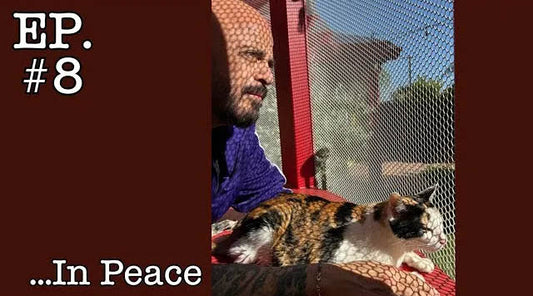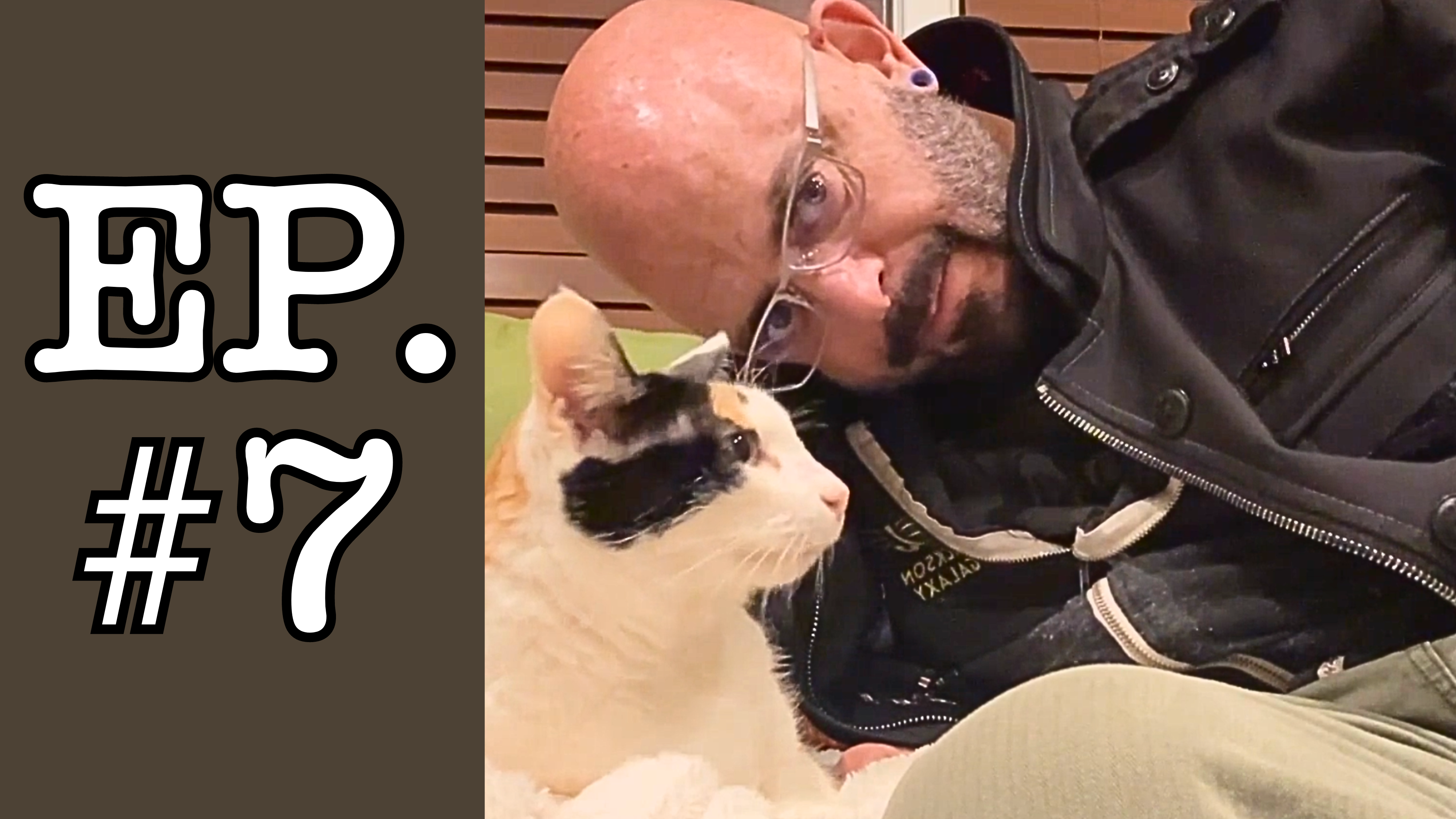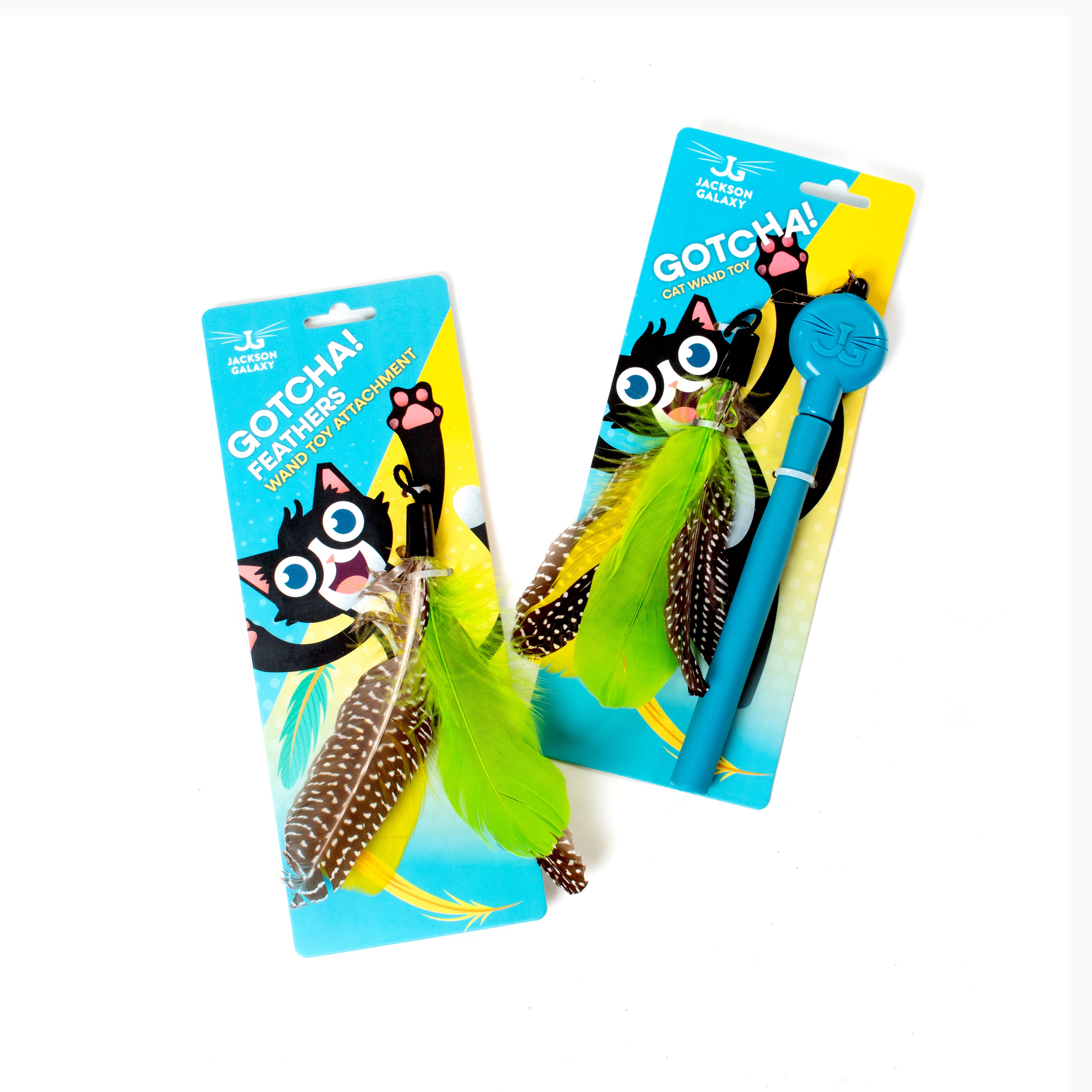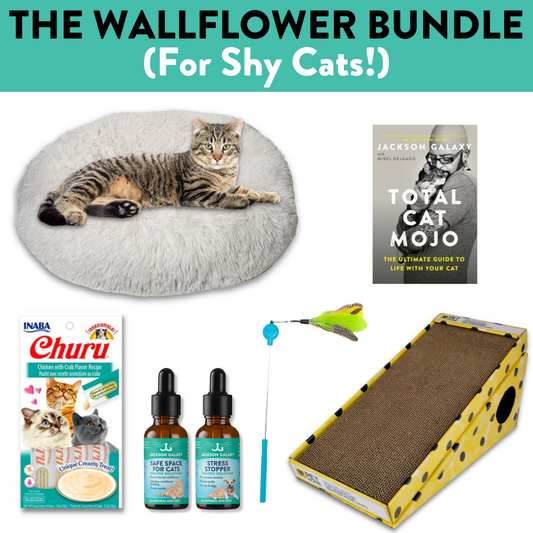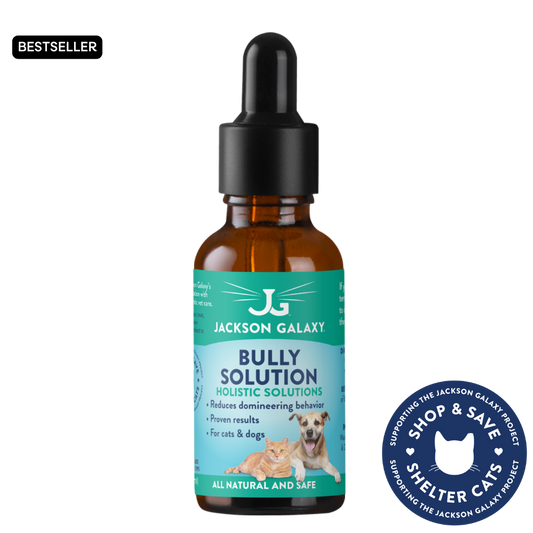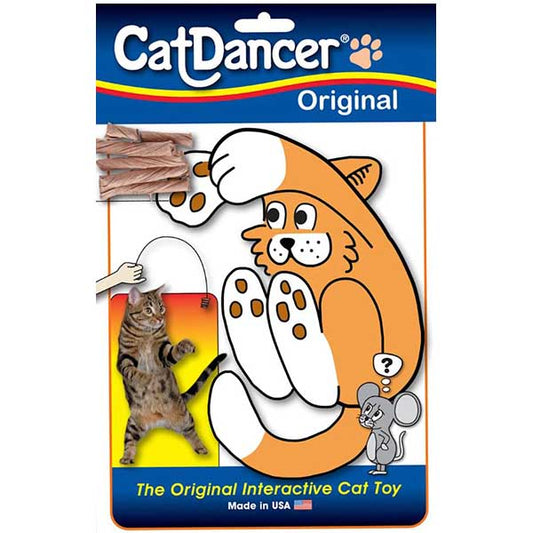A note about this series: Introducing cats to other animals can be a tricky affair. That said, it can also be smooth sailing, with very little potential conflict. And, it could fall somewhere between the two. Every animal is an individual, as is every human and every household. That’s exactly why I’ve made this series exhaustive in detail; I want to serve as many of those individuals as possible, and set everyone up for the best life possible.
Please don’t think that just because I’ve covered every angle, that means that cats are better left living on their own. I believe strongly that, by and large, cats should be with other cats. You may find that to serve the needs of both humans and non-humans in your home, you can move through some of these steps with ease. Great! And it’s equally fine if it takes awhile to get from beginning to end. Just remember: in the world of relationships, nothing is ever one-size-fits-all. It’s a process best served by being patient, empathetic and mindful.
Please don’t think that just because I’ve covered every angle, that means that cats are better left living on their own. I believe strongly that, by and large, cats should be with other cats. You may find that to serve the needs of both humans and non-humans in your home, you can move through some of these steps with ease. Great! And it’s equally fine if it takes awhile to get from beginning to end. Just remember: in the world of relationships, nothing is ever one-size-fits-all. It’s a process best served by being patient, empathetic and mindful.
A note about this episode: As I’ve alluded to before, many facets of cat introduction are better served, and infinitely easier, when taken on with a human partner. In the case of the Eat Play Love exercise detailed in this episode, it’s virtually impossible to pull off solo and really takes two people to do well. In fact, as you will see, your partner in this final step is not only on the same page, but the same paragraph, the same sentence, working in tandem with you to help create a drama-free experience. Needless to say, should the train begin to derail a bit, two cats are infinitely easier to manage with two humans as opposed to one.
Now, let’s do this…with light, love and Mojo!
Episode Five: The Final Countdown
Here is a quick recap of the first four episodes in this series:
- In Episode One, we talked about Proactive Preparation and covered the three fundamental steps to take before you bring your new cat home;
- In Episode Two, we covered the importance of base camp, and the exact protocol I’ve used through the years to ensure the smoothest initial transition for your new cat into your home;
- Episode Three was all about the “other side of the door” feeding ritual, which I recommended as a non-negotiable to get us one step closer to the prospects of a truly harmonious, face-to-face introduction;
- In Episode Four, we discussed the fine art of initiating visual access, and I revealed a number of options and tips to keep things as smooth as possible for this critical step.
In this final episode, it’s time for the ship to sail as we set out to get both cats—resident and newcomer—in a room together… without significant incident. As with all previous steps, success at the end of this particular rainbow is defined differently, depending on the cats themselves and the home they live in. In general, however, manage your expectations by remembering this: having the participants tolerate one another is just as much a cause for celebration as them being BFFs. As it is with humans, when it comes to relationships, trust is the bridge that takes us from being acquaintances to being friends. Let’s continue to build that bridge!

Step Five:
Eat Play Love
I’m a huge hockey fan, and I always thought the most fascinating thing about the sport was the pregame ritual, when both teams would skate out onto the ice for their warm-up period. Each team would occupy an opposite side of the rink, with the red line dividing the ice right down the middle. The players would skate in circles, warming up their legs and taking shots at their goalie. And they would occasionally glance over at their opponents at the other side of the rink, who were also skating in circles and warming up. Sworn enemies, engaged in the same activity, separated by a painted line. What kept these continual circles moving while this unspoken frenetic energy, boiling beneath the surface, dictated that, at any moment, a staredown would lead to a full-scale throwdown? The fragile peace was kept by virtue of the ritual itself; the players knew that “this is the way it always happens—and it never has or will result in a brawl.” This is the vision I had in mind when designing the final step of introduction, which I call Eat Play Love (EPL).
Philosophically, the “Eat Play Love” ritual we’ll be discussing here is an extension of the “other side of the door” exercise. Before, you were just creating a positive association based on food. Now you are going for the whole enchilada. These three things—eat, play, and love—represent the highest of high-value experiences we humans bring to our cats in the course of a day. When this exercise is in play (no pun intended), all of these experiences are withheld until they can be broken out as one big feel-good extravaganza (to the best of our abilities, of course). This ritual has the potential to be Christmas morning every day, with the one caveat being that it happens with a strange cat in the room.
The gist of EPL is pretty simple: You’re bringing one cat into a room where there’s another cat at the other end of the “rink,” so to speak, who is already engaged in a high-value, fully engrossing activity. And your challenge is to keep them “skating” in their own circle for as long as possible through treats, positive reinforcement, play, and . . . well . . . love—without that staredown/throwdown happening.
The Eat Play Love Checklist
Before we delve into the particulars, here are a few prerequisites to have in order before the ritual begins:
1. The Unders and the Outs —When we lose control of exercises like EPL, many times we lose it to the environment itself. One thing I can tell you from experience—fights start with chasing. Chasing very often ends in a room, in a closet, or under a bed or a piece of furniture you never in your wildest nightmares thought was big enough for one cat, let alone two. You can control the chaos by controlling the space—and that means blocking off the Unders and sealing off the Outs. If your EPL session takes place in the living room, then it’s up to you to seal off the Outs—meaning doors are closed, gates are up, and they are then forced to settle their differences (or discover their similarities) on a playing field that you alone have defined. Further define that space and block off the Unders. The only way to make sure you’re not going to put your hand into a “trash disposal” of fangs and claws is to make sure there’s not going to be a fight under a bed or couch!
2. Have Your Sight Blockers Ready —A Sight Blocker is something that: (a) the cats can’t see through; (b) is solid enough that you can place it between them and they can’t bust through it, and (c) is high enough that you don’t have to bend down to place it between the two cats and your hands are out of the “danger zone” should a fight break out. Flattened and taped-up cardboard boxes of the appropriate height have always worked best for me, or you could try a thick piece of foam core. Don’t use a blanket or something flimsy. They’ll just run through it.
When you see that first sign of doom—usually it’s the moment at which movement stops and the staredown starts—it’s game over: sight blocker down. If you can’t control them with toys and treats, lead them away. Use the sight blocker to guide someone out of the room. Again, your goal is to end everything on a high note, or at least not a low note.
3. Last Resort Removal Option —In the event of a serious lockdown, when you can’t get the cats to budge even with sight blockers down, or if, despite your best efforts, a fight breaks out, a blanket can be a good friend. Just toss it over one of them, scoop him up, and remove him from the room. Another tool to have on hand is an empty soda can with pennies in it and tape across the opening. As opposed to using your voice, which will just add bad associations on top of an already bad situation, shaking that can will help shock the cats out of the moment they are locked into. The thing that unites these tools? They help to keep your panicked initial response from happening, which is just to scream and stick your hands into the cat blender. It will never end well for you.
4. Be “Fire Drill” Ready —Sight blockers, penny cans, and blankets should be placed so that no matter where you are in the room, you can quickly access them while you are also allowing the organic process of the two cats comingling to happen. In other words, the last thing you want is to hover—you’ve got to have the confidence to step back, be cool, and remove panic from a stressful situation. That’s why we think of all eventualities, and proactively incorporate our tools. Ask yourself: if they begin to fight, where will it be most likely to break out and where will it end? Mark those areas with sight blockers, cans, and blankets. At the same time, you need to be able to spring into action should the proceedings go south. The key is, though, that springing into action contains steps that you’ve thought through enough times—which means your response will be measured, appropriate to the situation itself, and not driven by emotions.
Ready, Set, Go!
Your endgame here is to create an even fuller immersion into the positive association experience we’ve been working on throughout this entire series. In this case, there is no barrier between the two cats, and you will ultimately shoot for both cats eating a meal in the same room. Success here is the final frontier before full integration.
Here is the step-by-step process for pulling this off:
A. Know Your Feline Participants: Get to know who you’re dealing with.
- What type of players are your resident and newcomer? Are they quick to engage in play or do they typically need a few minutes to warm into the idea?
- Do they tend to be more food motivated or love/attention motivated?
- What is the highest order of pleasure on their cat “Jackpot meter”? What would go beyond really liking something and guarantee engrossment? Would it involve a favorite food/Jackpot treat, a special toy, or something like brushing or petting? Keep in mind that these treats/activities need to be something that keeps his motor humming and motivation high even when another cat is in his space.
B. Prime the Jackpot Pump: You may be absolutely sure of what your cat’s favorite treat or toy is, but it will only become “Jackpot!” after a period of absence. This is to say that, before getting into the EPL festivities, you must withhold her favorite things. I know, it’s going to be hard not to dispense treats or favorite tastes whenever she gives you those big baleful eyes or that mournful “Why do you hate me?” meow, but don’t give in. Delayed gratification will turn all of these things into a Jackpot party!
C. Ritualize an Optimal Play Session with Each Cat First: Once you know your player’s preferences, it’s important to have a successful session with one cat in the absence of the other cat, so you know what it looks like when each cat is engaged vs. when each is distracted. This will help you evaluate and monitor the Eat Play Love session when they are both in the same room, and, just as important, it will help end the session on a high note. You will know what they like for play, and you’ll also know when they are about to be turned off. Instead of giving them the opportunity to dash for the other cat, you are ending the session while they are still distracted by the play. Stay one step ahead of the game.
D. The Eat Play Love Session: Ready to go? To prepare, choose the common-area room in which to have the joint session. This should be the largest room with the most amount of empty space; a crowded, smaller room gives the cats too many things to focus on and too many opportunities to get away from you and to get at each other. Next, enlist the help of a friend, significant other, family member, etc. Again, I am always a proponent of having human partners to aid in these introduction steps, but this exercise, specifically, is one you just can’t do solo.
Important: The objective is to keep both cats moving in big, opposing circles. Momentum is on equal par with engagement during this exercise, and, likewise, stasis is our greatest enemy.
Eat, Play, Love: Step-By-Step
With all of the above in mind, we are now ready:
Step One – Start with One Cat: Begin by playing with only one cat in the room at first. Make sure he is engaged, and keep him moving. If you are dispensing treats, get that bread-crumb trail going; as he is chewing one, you put the next one down where he can see it, so that he is moving toward his next goal as he’s finishing the previous one. The same goes for toys; you need to be in control of your cat’s head—the rest will follow. In times of potential staredowns, nothing is more your friend than your ability to move your cat’s eyes where you want them to look.
Step Two – Bring in the Other Cat: Casually have your partner bring the other cat into the room and immediately engage her. In a perfect world, you would lead the cat into the space with whatever is their Jackpot, whether that is food, a toy, etc. This way you are not creating that extra static energy on your cat’s part of being carried into the space. You should aim for giving her that extra dose of Mojo that comes from thinking that she is making all of her own decisions.
Step Three – Keep the “Rhythm” Going: The most important component when you bring the cats together is establishing and maintaining a rhythm of play once they hit the room. This is where your partner’s help is invaluable, because he or she can work to focus the other cat on the session while you do the same with yours.
Step Four – End the Session: The session will end in one of two ways: either the cats will end it, or the humans will. It goes without saying that you would prefer the latter every time. Knowing your cats’ physical language tells you when boredom is setting in, which leads to being easily distracted. That said, you can’t possibly retain all control all the time. Here are some extra tips to prevent a throwdown:
- The second one cat stops moving, stares at the other cat, and will not be redirected, you might as well call it a day.
- A perfect-world end to a session would be to lead them out of the room with a toy. As I said, I always prefer, for the sake of Cat Mojo, for cats to feel like they are making the decisions. If that decision, however, is looking like it’s going to be a messy one, and if you need to pick up one of the cats and bring him into another room before the cats take action on that decision, then that’s what you do.
- Always choose to end the exercise on a high note. Remember, you are trying to create positive associations, which is a check we can cash only with consistent, positive endings. Listen to your gut when it comes to adding one final challenge to the day’s proceedings.
- Cap off the EPL sequence—no matter if it ends good, bad, or ugly—with dinner. Chances are that your guys will probably be on the full side if the day went well, so you may need to hold off on mealtime for a bit, but keep the consistency going. At this point, the cats expect to eat dinner on either side of the door/gate, and it’s one last chance to end the day on a positively reinforced note.
Final Goal for Eat Play Love
Once you are secure in Eat Play Love—when you can accomplish EPL without having to end it prematurely, and it’s a ritual that has become a part of the everyday cycle—then you can break down the door/gate barrier for mealtime and end the session by feeding the cats on the side of the room that they occupy. Just remember that imaginary “red line” in the center of the room. Start with a more respectful distance on either side of the red line, just as you did initially with the door feeding ritual. In the end, eating tends to be the easiest path to détente that I know of.
Cat Daddy Eat Play Love Tips
Switch It Up: Use the principles of site swapping when doing Eat Play Love. If you do it the same way every single day, with one cat entering the perceived territory of another cat, then you’re inadvertently setting up a dynamic for overownership or lack thereof. Switch off. One day, bring the newcomer into the room where the resident is playing, then the next day, bring the resident into the room where the newcomer is playing.
Subdue the Staredown: As you go forward with this exercise and do it multiple times, you’ll know how to best redirect your cats if they start to stare. Distraction left unchecked can lead to the dreaded staredown. Knowing when distraction is about to happen means that you have an opportunity to retain control, redirect their attention, or choose to just call it a day. Essentially, really knowing their body language keeps you a step ahead of the game . . . and the cats. Remember: it’s on you to conduct these exercises without a fight breaking out.
Baby Steps to Success: At the beginning of this process, look for success in very small increments. If the going has already been a little tough during the introduction, having the two cats in the same territory and occupied for just one minute is a win. Although it might seem silly at first, write down the exact amount of time that this brief session lasted. Tomorrow, when you up it by five, ten, or even fifteen seconds, you’ve won that day, too. Sometimes the biggest successes come in the form of just a few seconds.
Don’t Sweat the Setbacks—Just Step Back: There’s always a possibility that, despite our best-laid plans, a fight breaks out. That shouldn’t be the end of your work; that should just be the end of the day. But it doesn’t mean that you’re doing everything wrong. Sometimes, you’re just working against what these cats have conditioned themselves to act like around each other. Sometimes, the cats are just having a bad day, or something stressful occurs in the home to throw off the predictable rhythms. Again, it’s important to remember that in the course of any relationship, there are fights. We just use words—they use claws. For your well-being, remember that an argument doesn’t define a relationship; it’s what happens afterward that does.
So what do you do if this happens? Back it up a step. For instance, if your first attempt at Eat Play Love ended before it ever began, with chaos erupting as soon as the exercise commenced, take it back to the last spot of repeated and predictable success. In this case, let’s say that the last time you fed three meals in a row without even a sideways glance from either participant was: opposite sides of the door, full visual access, three feet of separation. Then that’s where you go back to. If that’s asking too much (meaning either or both cats avoid eating, engage in too much growling, etc), retrace the process back one step from there. You will find, very quickly, an acceptable Challenge Line where you can restart the process.
Hopefully, at the end of all of these steps of introduction, you have two cats who… don’t care about each other. Yup, that’s right. As long as the groundwork has been successfully laid, you feel confident leaving them in the same room together for extended periods of time, and don’t hold your breath every time they make eye contact, then the bottom line is, they aren’t foes. Friendship, then, has every chance in the world of blossoming as time goes on.
And hopefully, for you the guardian, you have an overall understanding and appreciation for how cats perceive territory and others who share it with them. In the future, I hope you’ll be able to use individual techniques to enhance all of the relationships in the home, introduce even more cats, and head off problems before they begin. However, if an argument with lasting repercussions happens, use our technique to reintroduce the cats as if they have never met before. As I’ve said from the beginning, doing that is tried and true and will help make—and keep—peace for years to come!
Even though this series might seem in depth, you ain’t seen nothing yet! There is actually much more to be found in the chapter that this has been excerpted from in my new book, Total Cat Mojo.


